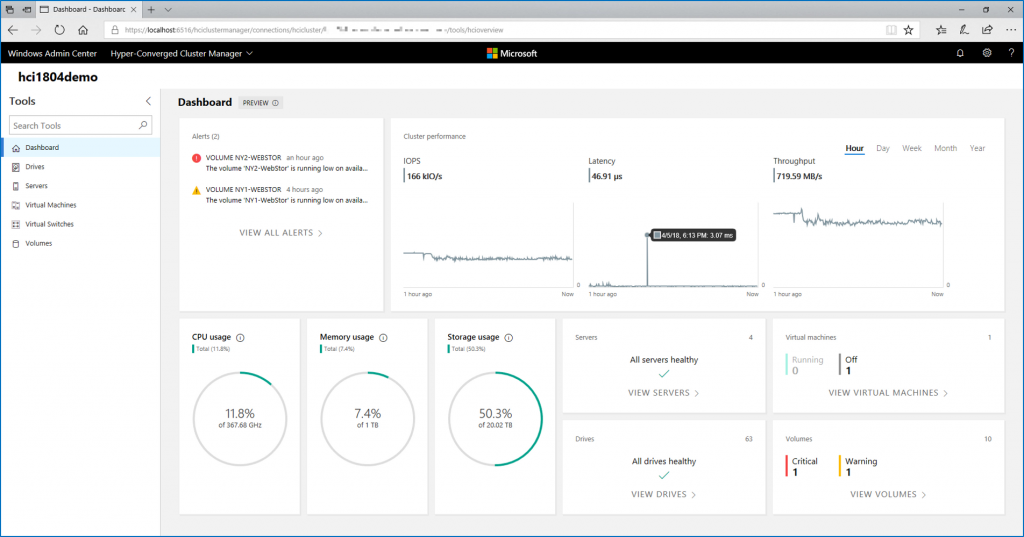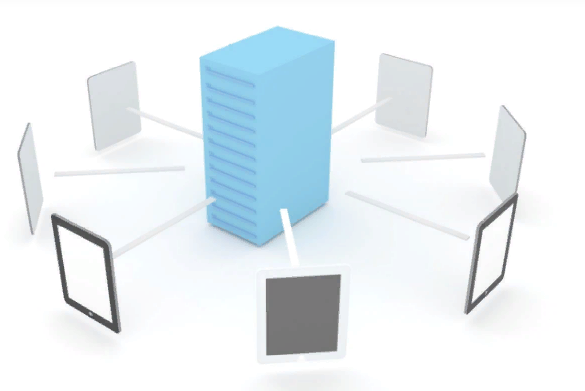Lately I worked for a customer to add two nodes in an existing 2-nodes Storage Spaces Direct cluster. The existing nodes are running on Windows Server 2016 while the new ones are running on Windows Server 2019. So, when I integrated the new nodes to the cluster, it was in mixed operating system mode because two different versions of Windows ...
Read More »Keep Dell Azure Stack HCI hardware up to date with WSSD Catalog
The firmware and driver’s management can be a pain during the lifecycle of an Azure Stack HCI. Some firmware are not supported, others must be installed to solve an issue. In the case of Dell hardware, a support matrix is available here. If you look at that matrix, you’ll see firmware and drivers for storage devices, Host Bus Adapter, switches, ...
Read More »Design the network for a Storage Spaces Direct cluster
In a Storage Spaces Direct cluster, the network is the most important part. If the network is not well designed or implemented, you can expect poor performance and high latency. All Software-Defined are based on a healthy network whether it is Nutanix, VMware vSAN or Microsoft S2D. When I audit S2D configuration, most of the time the issue comes from ...
Read More »S2D Real case: detect a lack of cache
Last week I worked for a customer who went through a performance issue on a S2D cluster. The customer’s infrastructure is composed of one compute cluster (Hyper-V) and one 4-node S2D cluster. First, I checked if it was related to the network and then if it’s a hardware failure that produces this performance drop. Then I ran the script watch-cluster.ps1 ...
Read More »Storage Spaces Direct: performance tests between 2-Way Mirroring and Nested Resiliency
Microsoft has released Windows Server 2019 with a new resiliency mode called nested resiliency. This mode enables to handle two failures in a two-node S2D cluster. Nested Resiliency comes in two flavors: nested two-way mirroring and nested mirror-accelerated parity. I’m certain that two-way mirroring is faster than nested mirror-accelerated parity but the first one provides only 25% of usable capacity ...
Read More »Support two failures in 2-node S2D cluster with nested resiliency
Microsoft just released Windows Server 2019 with a lot of improvement for Storage Spaces Direct. One of these improvements is the nested resiliency that is specific for 2-node S2D cluster. Thanks to this feature, a 2-node S2D cluster can now support two failures, at the cost of storage dedicated for resiliency. Nested Resiliency comes in two flavors: Nested two-Way mirroring: ...
Read More »Storage Spaces Direct: Parallel rebuild
Parallel rebuild is a Storage Spaces features that enables to repair a storage pool even if the failed disk is not replaced. This feature is not new to Storage Spaces Direct because it exists also since Windows Server 2012 with Storage Spaces. This is an automatic process which occurs if you have enough free space in the storage pool. This ...
Read More »Convert VMs with StarWind V2V converter
StarWind V2V converter is a free tool provided by StarWind to convert virtual hard drive. You can convert Hyper-V virtual hard drive (VHDX) to VMware ESXi virtual hard drive (VMDK) and vice versa. Other virtual hard drive formats are supported such as qcow2. Because StarWind V2V convert only the virtual hard drive, you can’t automate the migration between hypervisor. So, ...
Read More »Storage Spaces Direct and deduplication in Windows Server 2019
When Windows Server 2016 has been released, the data deduplication was not available for ReFS file system. With Storage Spaces Direct, the volume should be formatted in ReFS to get latest features (Accelerated VHDX operations) and to get the best performance. So, for Storage Spaces Direct data deduplication was not available. Data Deduplication can reduce the storage usage by removing ...
Read More »Migrate VMs from VMware to Nutanix AHV with Nutanix Xtract
Nutanix AHV is a custom KVM hypervisor integrated to Nutanix ecosystem such as Prism. This is an enterprise-class hypervisor and an alternative solution to VMware ESXi or Microsoft Hyper-V when deploying Nutanix. Nutanix AHV is fully integrated to Nutanix Prism and there is no other GUI to manage this hypervisor. To eases the migration to the Nutanix hypervisor from VMware, ...
Read More »








